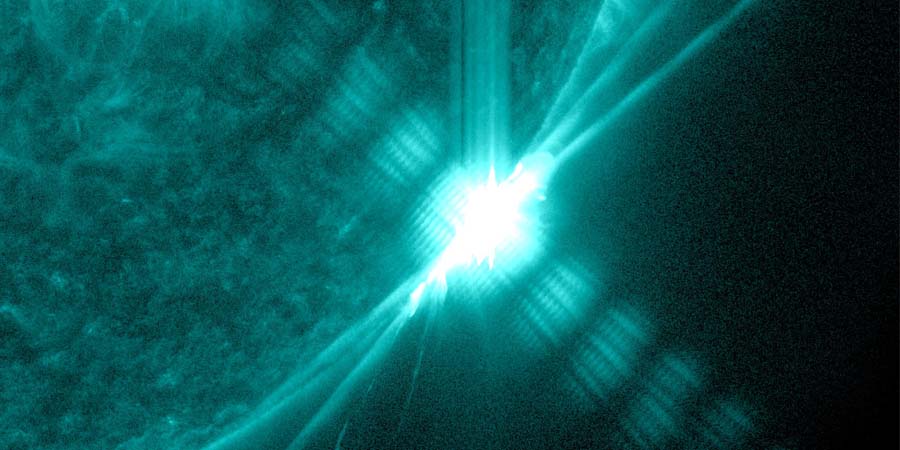X3.3 solar flare
Friday, 9 February 2024 18:15 UTC

Departing sunspot region 3575 which is already behind the south-west limb said goodbye this afternoon with a major X3.3 (R3-strong) solar flare which peaked at 13:14 UTC.
This is the second strongest solar flare of the current solar cycle thus far but because the eruption occurred well behind the limb the solar flare could very well have been much stronger. The coronal mass ejection launched during the event is very impressive but not aimed at our planet. The eruption did cause us to reach the moderate S2 solar radiation storm threshold which impacts HF radio transmission at arctic latitudes and could cause minor issues for sensitive electronics in satellites.
Departing sunspot region 3575 which is already behind the south-west limb was the source of the major X3.3 solar flare which peaked at 13:14 UTC. The resulting coronal mass ejection is impressive but of course not aimed at our planet. pic.twitter.com/MHHN7uQ012
— SpaceWeatherLive (@_SpaceWeather_) February 9, 2024
Sunspot region 3576
Earth-facing sunspot region 3576 keeps it's Beta-Gamma-Delta magnetic layout but is not as complex as when it appeared on the earth-facing solar disk a few days ago. It remains capable of M-class activity but an X-class solar flare from this sunspot region is not likely to occur at this moment.
Thank you for reading this article! Did you have any trouble with the technical terms used in this article? Our help section is the place to be where you can find in-depth articles, a FAQ and a list with common abbreviations. Still puzzled? Just post on our forum where we will help you the best we can!
Latest news
Latest forum messages
Support SpaceWeatherLive.com!
A lot of people come to SpaceWeatherLive to follow the Sun's activity or if there is aurora to be seen, but with more traffic comes higher server costs. Consider a donation if you enjoy SpaceWeatherLive so we can keep the website online!

Space weather facts
| Last X-flare | 2025/03/28 | X1.1 |
| Last M-flare | 2025/04/18 | M4.4 |
| Last geomagnetic storm | 2025/04/16 | Kp8- (G4) |
| Spotless days | |
|---|---|
| Last spotless day | 2022/06/08 |
| Monthly mean Sunspot Number | |
|---|---|
| March 2025 | 134.2 -20.4 |
| April 2025 | 120.1 -14.1 |
| Last 30 days | 116.4 -25.9 |


